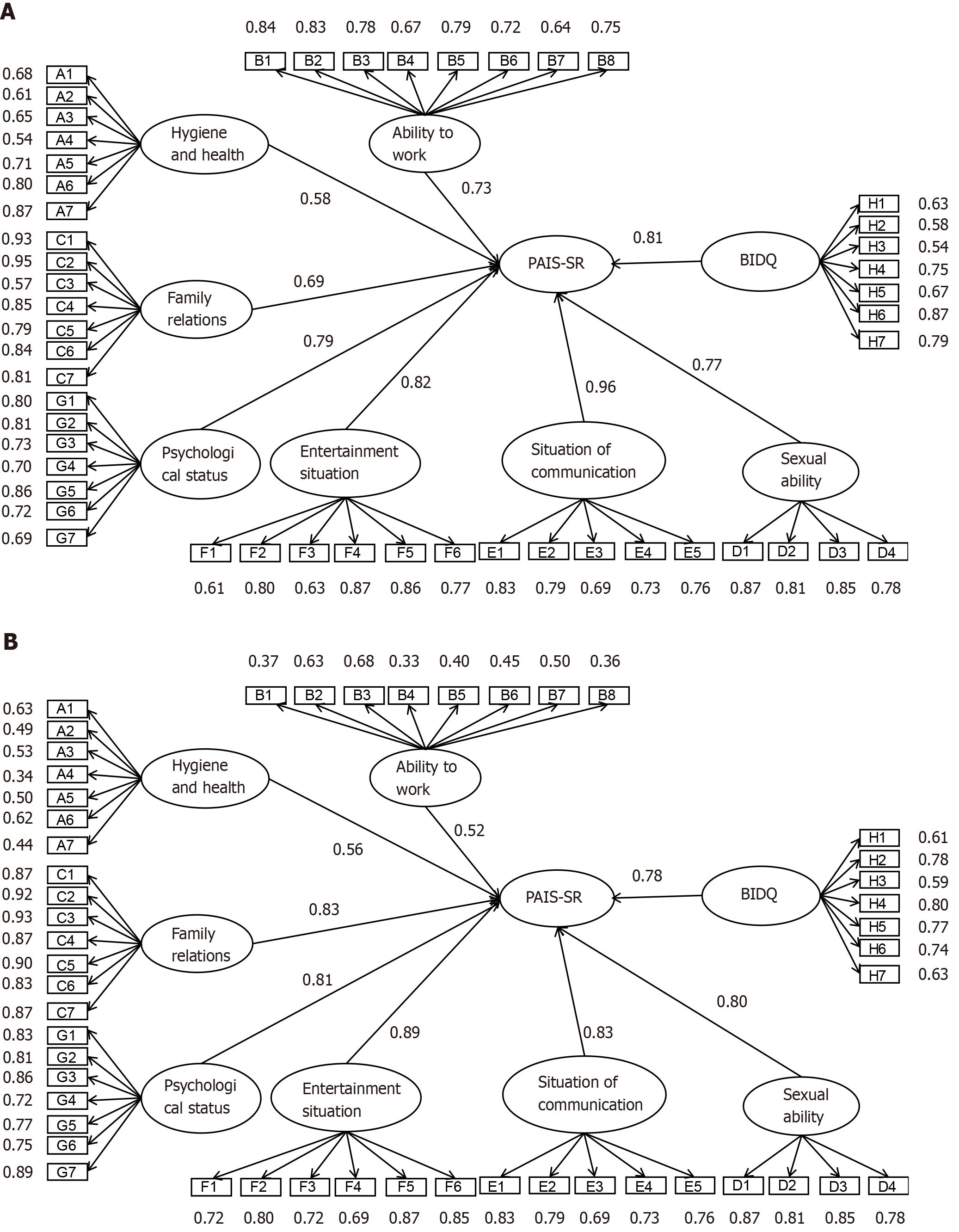Copyright
©The Author(s) 2024.
World J Psychiatry. Jun 19, 2024; 14(6): 920-929
Published online Jun 19, 2024. doi: 10.5498/wjp.v14.i6.920
Published online Jun 19, 2024. doi: 10.5498/wjp.v14.i6.920
Figure 1 Self-image stress level impact on the social adaptability.
A: Structural equation model of the effect of self-image stress level on the social resilience of employed patients; B: Structural equation model of the influence of self-image stress level on the social resilience of unemployed patients. A1-A7 represent topics 1-7 in the dimension of health care, respectively; B1-B8 represent questions 1-8 in the dimension of working ability, respectively; C1-C7 represent questions 1-7 in the dimension of family relationship, respectively; D1-D4 refers to questions 1-4 in the sexual ability dimension, respectively; E1-E5 indicates topics 1-5 in the communication dimension, respectively. F1-F6: represent topics 1-6 in the entertainment dimension, respectively; G1-G7 represent questions 1-7 in the dimension of psychological status, respectively. H1-H7: H1 represents the degree of concern caused by appearance; H2 represents the possible degree of behavioral intervention; H3 represents body image-related distress; H4 represents social and occupational problems caused by body image; H5 represents the impact of body image on social life; H6 represents the impact of body image on learning, work, or other role functions; H7 represents body image-induced avoidance behavior. PAIS-SR: Self-report Psychosocial Adjustment to Illness Scale; BIDQ: Body image disturbance questionnaire.
- Citation: Li J, Wang HM, Jiang Y, Liu ZN, He BH. Change in self-image pressure level before and after autologous fat breast augmentation and its effect on social adaptability. World J Psychiatry 2024; 14(6): 920-929
- URL: https://www.wjgnet.com/2220-3206/full/v14/i6/920.htm
- DOI: https://dx.doi.org/10.5498/wjp.v14.i6.920









